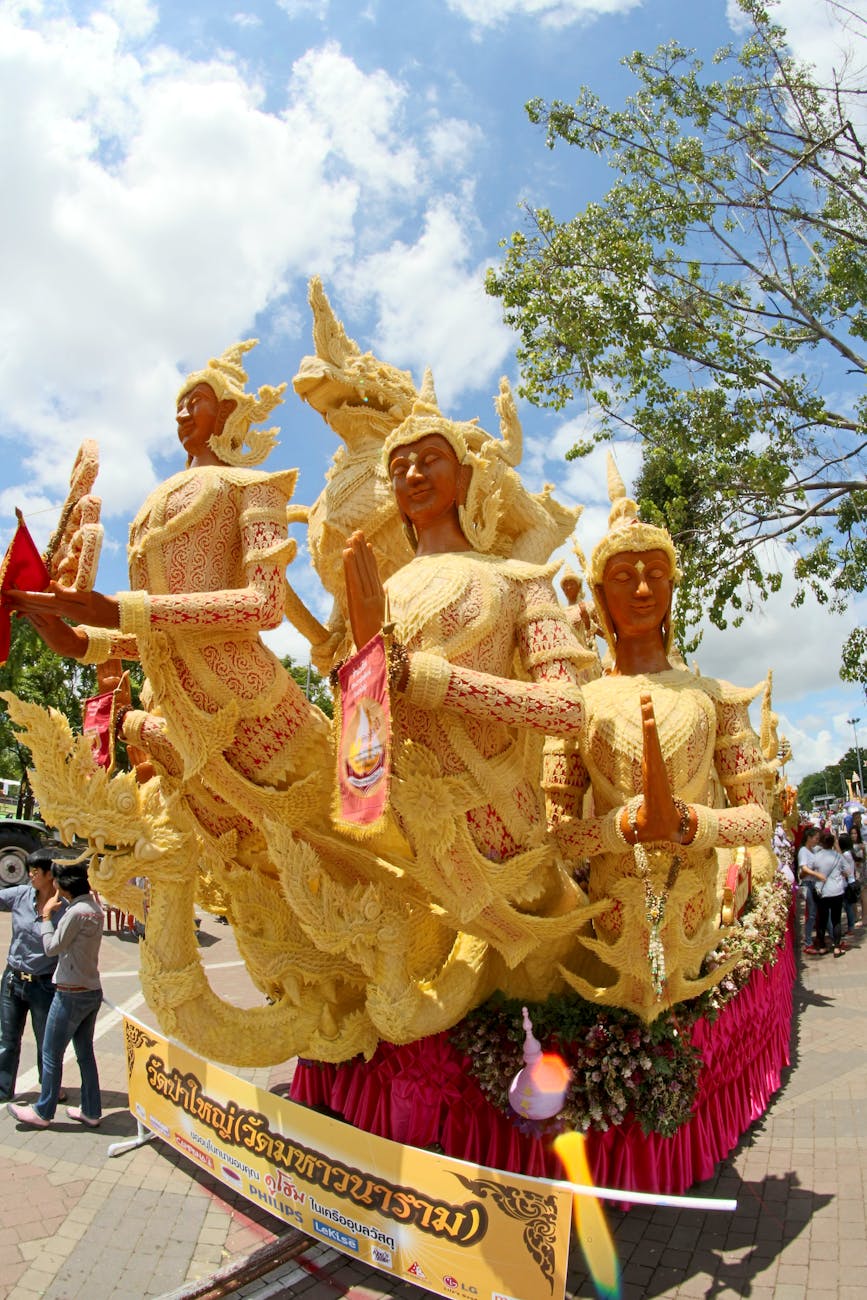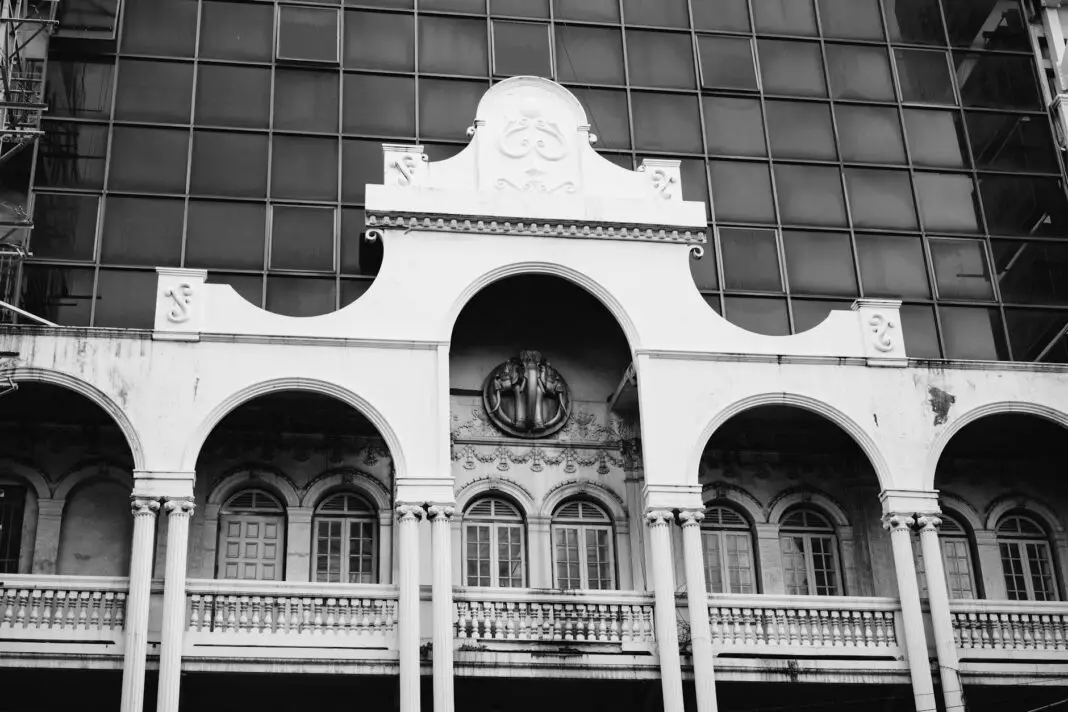Experiencing Thailand goes beyond its stunning landscapes and vibrant culture; it’s about delving into the hidden gems of Thai decorative arts that can truly captivate your imagination. From stunning murals to intricately designed textiles, Thailand is a treasure chest overflowing with artistic brilliance and rich traditions. In this blog post, we will uncover some of the most awe-inspiring elements of Thai decorative arts, offering insights into how each piece tells a story, reflects the country’s spiritual beliefs, and showcases the incredible craftsmanship of its artisans. Prepare to be amazed by the secret treasures awaiting you in the Land of Smiles!
As we embark on this journey, you will discover the allure of traditional Thai art that continues to thrive in contemporary society. From indigenous crafts steeped in centuries-old traditions to modern interpretations that push artistic boundaries, each facet of Thai decorative arts has its unique charm. This exploration not only celebrates Thailand’s artistic heritage but also emphasizes its significance in today’s world. So, get ready to feast your eyes and soul on this enchanting world of artistry!
Table of Contents
- Historical Heritage of Thai Decorative Arts
- Traditional Crafts: A Testament to Skilled Artisanship
- The Spiritual Essence of Temple Art
- Textile Arts: Weaving Stories and Traditions
- Contemporary Interpretations of Thai Art
- Taking the Treasure Home: How to Choose Authentic Thai Decorative Arts
Historical Heritage of Thai Decorative Arts
The history of Thai decorative arts dates back centuries, revealing a rich tapestry of influences from various cultures and eras. The country’s art scene has evolved significantly, weaving together strands from ancient Khmer civilization, Indian influences, and even more modern Western aesthetics. Understanding this historical background immerses you in the deep cultural significance behind every brushstroke, sculpture, and fabric pattern. The Buddhist philosophy, in particular, heavily influences much of the art, emphasizing delicacy, harmony, and reverence for nature.
Many traditional forms, such as gold leafing, gilding, and intricate carvings, showcase the uniqueness of Thai craftsmanship. Recognizing the value of these art forms not only enriches your experience as a visitor but also fosters respect for the artisans who dedicate their lives to preserving these time-honored traditions. As you admire these works, you’ll find they resonate with the essence of Thai identity—timeless, profound, and incredibly captivating.
Traditional Crafts: A Testament to Skilled Artisanship
Diving deeper into the world of Thai decorative arts reveals a plethora of traditional crafts that illustrate remarkable artisanship. From pottery and ceramics found in northern villages to intricate knots of bamboo weaving, each craft serves as a window into the lives of the artisans. Engaging with local craftspeople offers richer insights into their techniques, struggles, and inspirations. Moreover, these crafts often feature symbolism that connects to local beliefs and folklore, thereby grounding them in their cultural context.
The artistry of hand-painted pottery showcases both functionality and beauty, with each piece echoing the beauty of the surrounding landscapes. Similarly, intricate wood carvings tell stories that transgress generations, preserving historical narratives. Not only do these traditional crafts reflect the splendor of Thai culture, but they also invite you to cherish each object as a unique piece of artistry crafted with love and precision. Embracing this local craftsmanship enriches your understanding of Thailand’s vibrant culture and exhilarating history.
The Spiritual Essence of Temple Art
Thailand’s temples are magnificent sanctuaries teeming with artistry that goes beyond mere aesthetics; they embody spiritual narratives that resonate deeply with Thai culture. The intricate murals, gilded altars, and ornate sculptures within these sacred spaces illustrate stories from Buddha’s life and Buddhist teachings, creating an enchanting atmosphere that transports visitors to a serene state of mind. Each temple showcases distinctive artistic styles that vary from region to region, reflecting both local beliefs and the geographical influences of the area.
For example, the murals in Wat Phra Kaew in Bangkok radiate vibrant colors that depict tales from ancient texts, creating a vivid tableau that captivates viewers. Visiting these temples not only provides an opportunity to appreciate beautiful art but also encourages spiritual contemplation and respect for the traditions they represent. This close relationship between art and spirituality elevates your exploration to a profound journey, allowing you to experience the soul of Thailand through its sacred craftsmanship.
Textile Arts: Weaving Stories and Traditions
The world of Thai textile arts is a vibrant tapestry woven from rich cultural traditions, employing captivating colors, patterns, and techniques passed down through generations. Traditional fabrics like silk and cotton reflect the country’s ecology and agricultural practices, while showcasing local motifs embedded with deep meanings. Each woven piece tells a unique story; be it the intricate designs of Lanna silk or the bold patterns of the southern batik, they capture the essence of the regions they originate from.
Exploring local markets provides an opportunity to witness artisans at work, creating beautiful textiles in many methods, including dyeing, pattern-making, and embroidery. By purchasing authentic textiles directly from artisans or local shops, you not only acquire beautiful pieces but also contribute to the preservation of these exquisite techniques. As you drape yourself in vibrant silks, you embrace a living history, a connection to the land, and the stories woven into each thread.
Contemporary Interpretations of Thai Art
While the traditional arts hold a special place in the Thai cultural landscape, the contemporary art scene has emerged gloriously, invigorating the historical treasures with modern interpretations. Today’s artists infuse traditional techniques with fresh concepts and materials, redefining the boundaries of Thai decorative arts. By exploring innovative mediums such as digital art, mixed media, and installation, a whole new dialogue is being created, allowing concepts of tradition and modernity to converge.
Visiting galleries and exhibitions reveals the breadth of this contemporary movement, where artists narrate modern stories through the lens of their rich heritage. As a visitor, engaging with this dynamic art scene encourages you to rethink how these traditions manifest in today’s world. This fusion of history and modernity is a testament to Thailand’s resilience and adaptability, showcasing its beautiful past while demonstrating its robust future in the arts.
Taking the Treasure Home: How to Choose Authentic Thai Decorative Arts
When traveling, selecting authentic Thai decorative arts can be both an exciting and overwhelming endeavor. To ensure you’re taking home genuine treasures, consider visiting local markets and workshops where artisans produce their work. Engaging directly with the creators offers insights into the various techniques used, fostering a deeper appreciation of their craftsmanship. Opt for items that come with a story—be it the origin of a design, the symbolic significance of a technique, or the materials used—instead of mass-produced souvenirs.
Moreover, look for reputable shops or galleries with a focus on promoting authentic artisanal products. Many cultural hubs provide certifications or documentation verifying the legitimacy of their products. By valuing authenticity, you support sustainable practices and empower local artisans to continue their craft. Embracing this approach not only enriches your travel experience but also creates lasting memories tied to meaningful cultural exchanges.
Reflection on the Amazing Treasures of Thai Arts
The journey through Thailand’s decorative arts is nothing short of enchanting. Each element you encounter reveals a story intertwined with the country’s rich cultural history, showcasing the artisans’ dedication and talent. As you walk through markets, temples, and galleries, you are continuously captivated by the beauty and depth of the artistic expressions around you. Appreciating these treasures means recognizing their significance beyond mere aesthetics—it’s about celebrating the cultural narratives and traditions that define Thailand’s identity today and for generations to come.
Frequently Asked Questions
- What are the main types of Thai decorative arts? Thai decorative arts include traditional textiles, ceramics, carvings, and temple art, each rich in cultural significance and craftsmanship.
- How can I identify authentic Thai handicrafts? Look for products directly sourced from artisans, preferably with stories behind them. Ensuring transparency in the production process greatly enhances authenticity.
- Are contemporary Thai art forms influenced by traditional methods? Yes, many contemporary artists in Thailand fuse traditional techniques with modern concepts, creating a unique intersection of historical and modern artistry.
- What role does spirituality play in Thai decorative arts? Spiritual beliefs, particularly Buddhism, significantly influence Thai art forms, often depicted in temple art that tells spiritual stories and concepts.
- Can I find workshops to learn about Thai decorative arts during my visit? Yes, various cultural centers and artisans offer workshops where visitors can learn traditional crafting techniques, ensuring a hands-on experience with Thai arts.
Image Credit: Pexels





